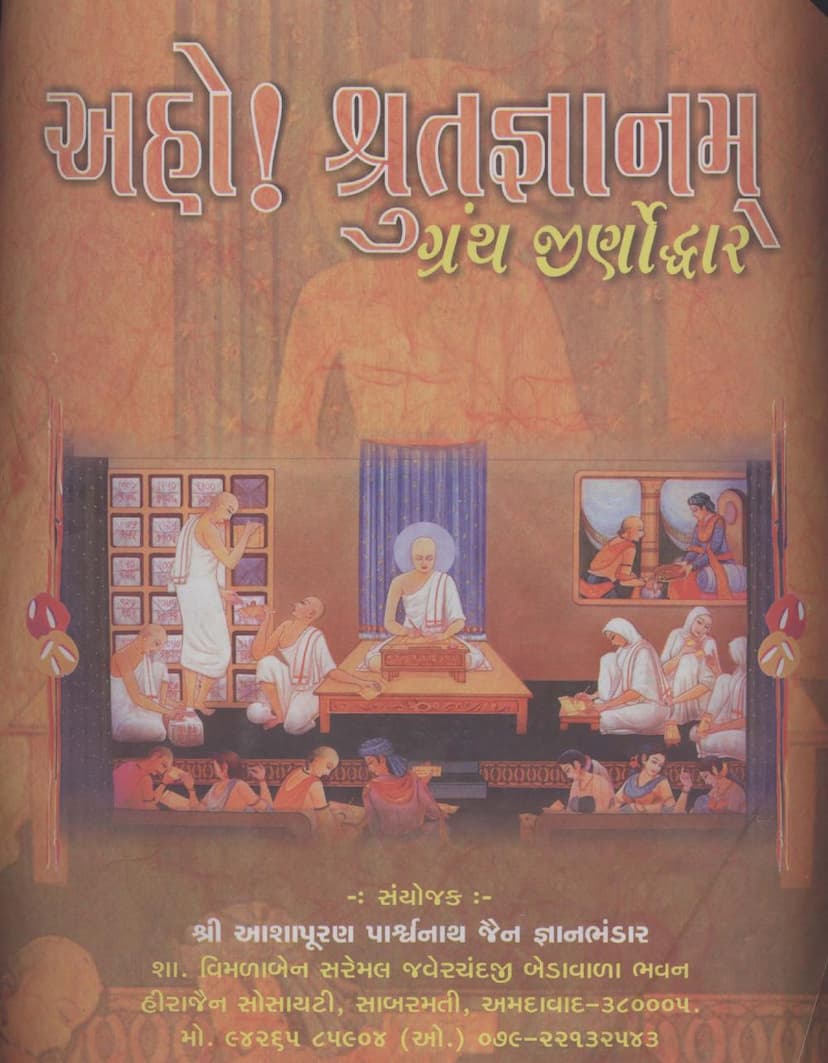Prachin Lekh Sangraha Part 1
Added to library: September 2, 2025

Summary
Based on the provided text, here's a comprehensive summary of the Jain text "Prachin Lekh Sangraha Part 1" by Acharyas Vijaydharmsuri and Vidyavijay:
Title: Prachin Lekh Sangraha Part 1 (Collection of Ancient Inscriptions, Part 1)
Authors: Acharya Vijaydharmsuri and Muni Vidyavijay.
Publisher: Yashovijay Jain Granthmala.
Overview: This book is a significant collection and compilation of ancient Jain inscriptions, primarily epigraphs found on stone and metal images. It serves as a crucial resource for understanding the history, lineage of Jaina acharyas, geographical spread of Jainism, various sects (Gacchas), communities (Jatis/Vanshas), and the socio-religious practices prevalent in ancient and medieval India, particularly within the Jain community.
Key Contributions and Content:
-
Vast Collection of Inscriptions: The first part of the collection features approximately 500 inscriptions, dating from the 12th century to the mid-16th century CE. These inscriptions are primarily found on stone and metal sculptures, though some might be on other materials.
-
Historical Significance: The preface emphasizes the critical role of epigraphs and Jain literature in reconstructing the history of India. It highlights that the history of India is incomplete without understanding the Jain contribution, as Jain kings, ministers, and acharyas played vital roles in preserving Indian culture, literature, and art.
-
Purpose of the Collection: The primary aim is to make these valuable inscriptions accessible to scholars and researchers for the reconstruction of a comprehensive Jain history. The collection aims to shed light on the religious, social, and cultural aspects of the Jain community over centuries.
-
Methodology and Structure:
- The inscriptions are presented with their original text, often in Gujarati or Prakrit/Sanskrit.
- Each inscription is assigned a number and includes details like the year (Samvat), month, date, day, location (village/city), the names of the individuals who commissioned the inscription or idol, the acharyas who consecrated it, the Gaccha (lineage of acharyas), Jati/Vansha (community/clan), and sometimes details about the deity or temple.
- The collection includes extensive indices and appendices that cross-reference inscriptions by:
- Villages: Listing all villages from which inscriptions are sourced.
- Gacchas: Cataloging the various Jain monastic lineages mentioned (e.g., Anchal Gaccha, Tapagaccha, Kharatar Gaccha, etc.).
- Jatis/Vanshas/Kulas: Listing the various communities and clans mentioned (e.g., Oswal, Porwad, Shri Mal, Humad, etc.).
- Gotras and Shakas: Indexing the ancestral lineages and branches.
- Acharyas and Sadhus: Providing a comprehensive list of Jain monks and scholars mentioned in the inscriptions.
- Kings and Dynasties: Mentioning royal patrons and dynasties associated with Jainism.
- The editors have provided notes and explanations for some inscriptions, clarifying linguistic variations, potential errors, or historical context.
-
Preservation and Revitalization: The project is described as a "Jirnoddhar" (restoration/renovation) of ancient printed books, aiming to preserve the knowledge contained within them and make them available for study. The scanning and printing of these rare works are part of a larger effort to protect and disseminate Jain heritage.
-
Inspiration and Effort: The collection is dedicated to the memory and inspiration of the revered Acharyas like Vijaydharmasuri and Vijyendrasuri, who initiated the effort to collect such historical materials. It acknowledges the immense effort involved in gathering these scattered historical records from various Bhandars (libraries).
-
Early Efforts: The preface notes earlier contributions by scholars like Dr. A. Guerinot and Pandit Gaurishankar Hirachand Ojha in collecting Jain inscriptions, acknowledging the groundwork laid by them. It also mentions the work of Jinavijayji and Puranachandra Nahar in similar compilations.
Overall Significance: "Prachin Lekh Sangraha Part 1" is a monumental work that serves as a primary source for Jain historical research. It provides raw data in the form of inscriptions, allowing scholars to meticulously piece together the history and evolution of Jainism, its influential figures, and its cultural impact across different regions of India. The detailed indexing makes it a valuable reference tool for researchers in history, archaeology, religious studies, and linguistics.